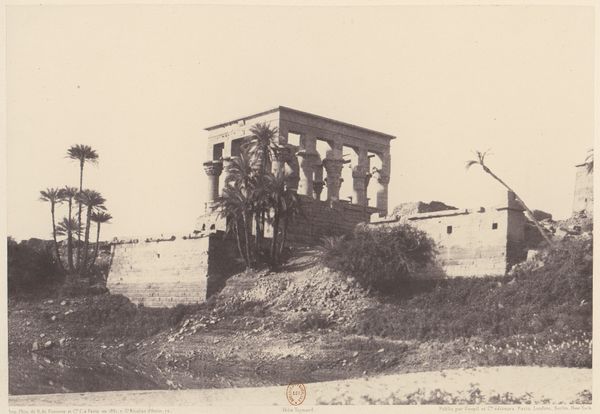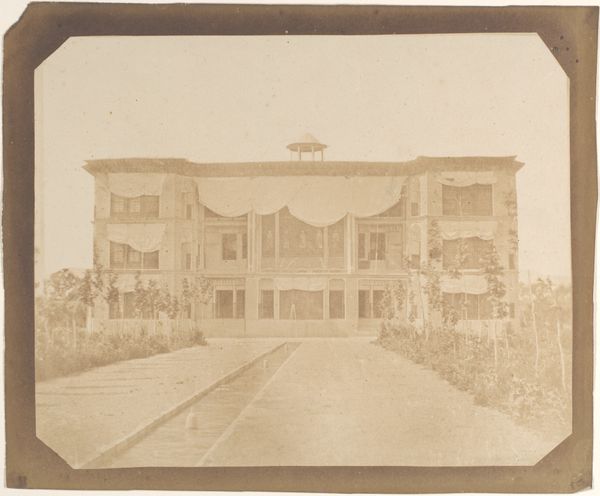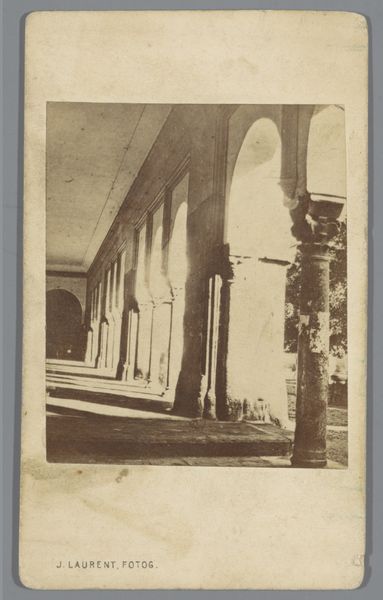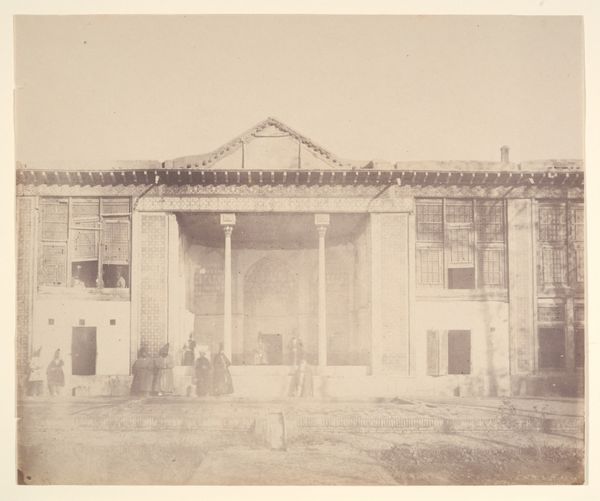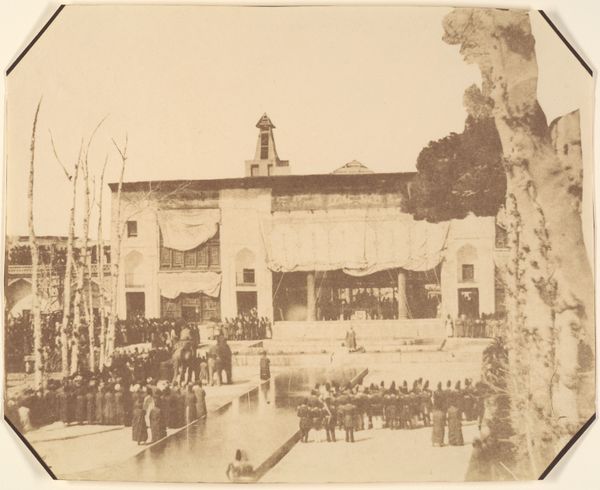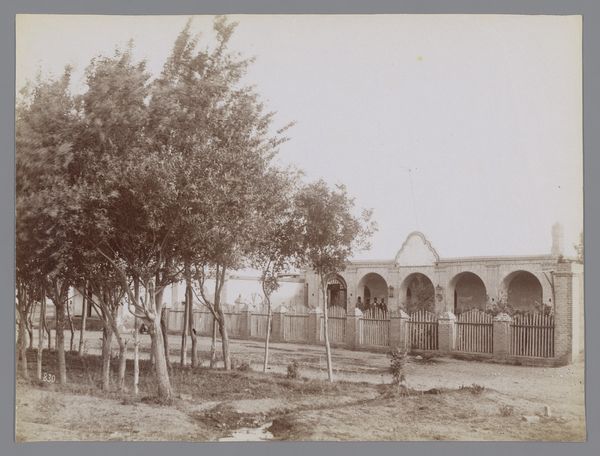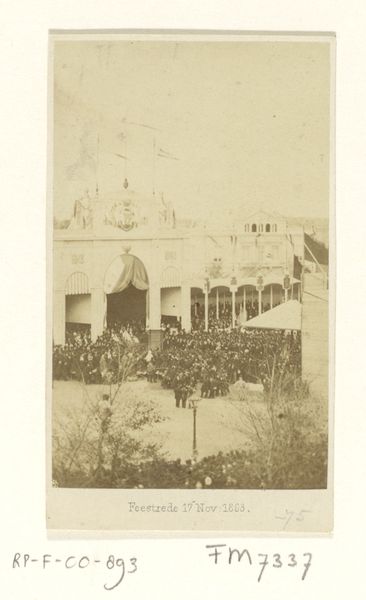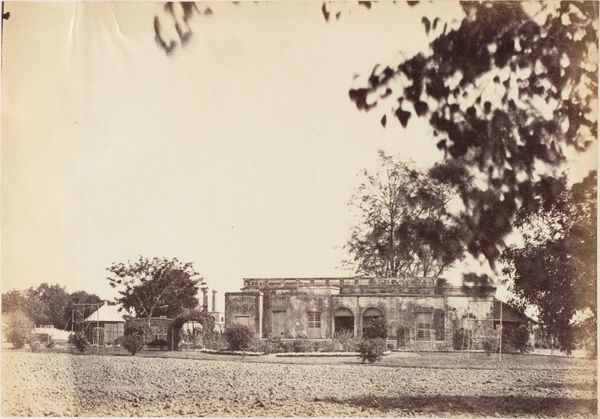![[Peacock's Throne Room, Teheran] by Luigi Pesce](/_next/image?url=https%3A%2F%2Fd2w8kbdekdi1gv.cloudfront.net%2FeyJidWNrZXQiOiAiYXJ0ZXJhLWltYWdlcy1idWNrZXQiLCAia2V5IjogImFydHdvcmtzLzAzZGY1MDY2LTY1ZmUtNGU1Ny04ZjFhLTY5NjVmOTQ2ZGQ3Yy8wM2RmNTA2Ni02NWZlLTRlNTctOGYxYS02OTY1Zjk0NmRkN2NfZnVsbC5qcGciLCAiZWRpdHMiOiB7InJlc2l6ZSI6IHsid2lkdGgiOiAxOTIwLCAiaGVpZ2h0IjogMTkyMCwgImZpdCI6ICJpbnNpZGUifX19&w=3840&q=75)
daguerreotype, photography, architecture
#
landscape
#
daguerreotype
#
photography
#
islamic-art
#
architecture
Copyright: Public Domain
Editor: We're looking at Luigi Pesce's "Peacock's Throne Room, Teheran," a daguerreotype from 1858. It's incredible to think about seeing this in person! The light in this old photograph is so striking, but almost eerie at the same time, especially on those draped fabrics. How do you interpret this work, placing it in the context of the time it was made? Curator: This photograph offers a crucial glimpse into 19th-century Iran, a period marked by Western influence and internal power struggles. Pesce, an outsider, captures not just architecture but a stage upon which ideas of sovereignty and cultural exchange played out. The Peacock Throne itself is a symbol of power, but the daguerreotype process—a Western technology—raises questions about representation, appropriation, and who controls the narrative. Consider how the stark clarity of the photograph might contrast with the opulence suggested by the title. Do you notice any details that hint at social or political dynamics? Editor: That's a really insightful point. I see the formality in the building’s structure itself and the curtains as staging. The drapes are heavy and ornate, clearly suggesting immense wealth and control, while still being a photograph that flattens some of that richness out. Curator: Exactly. It becomes a study in contrasts. What does it mean to capture this seat of power with a technology rooted in a different cultural and political context? It forces us to consider the power dynamics inherent in image-making itself. Also, by viewing it from our modern perspective, we are seeing an altered representation from over a century ago. It changes the meaning once more. Editor: I hadn't thought about it that way. So, by analyzing these dynamics, the artwork can communicate a rich cultural and historical narrative of the complex historical and societal dynamics present in its making. It shows how perspective shifts over time as well. Curator: Precisely. By dissecting the image, its origins, and its context, we expose the intricate layers of history, power, and representation embedded within this seemingly straightforward architectural study. We give the art a renewed life.
Comments
No comments
Be the first to comment and join the conversation on the ultimate creative platform.


